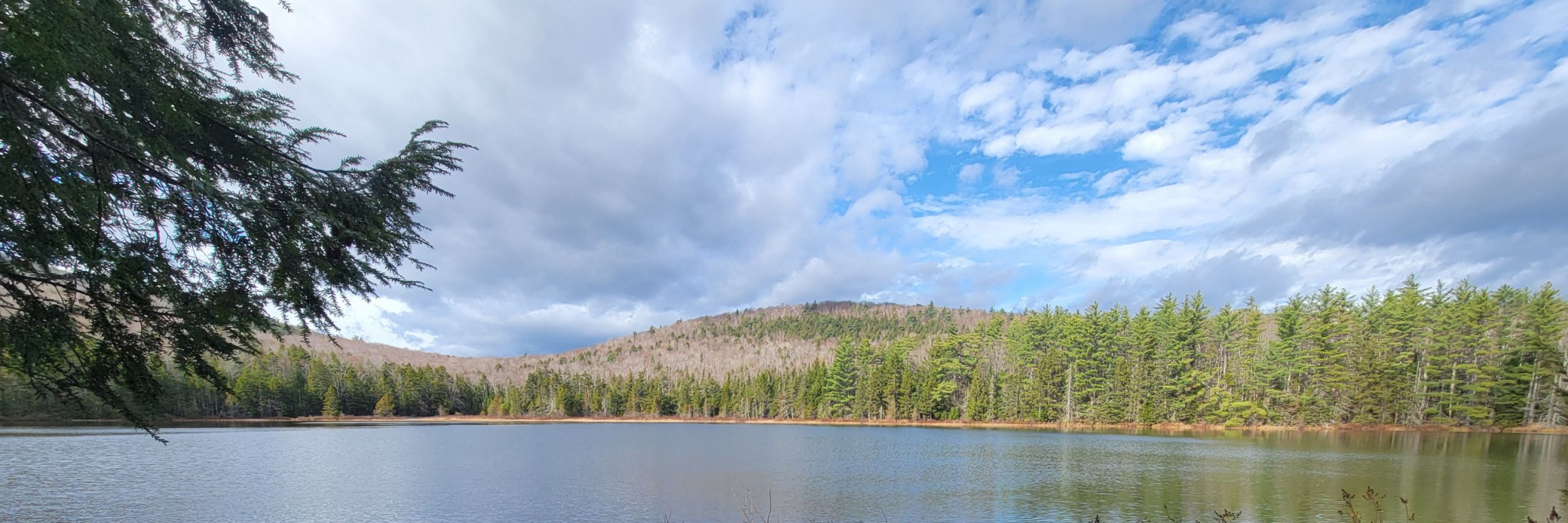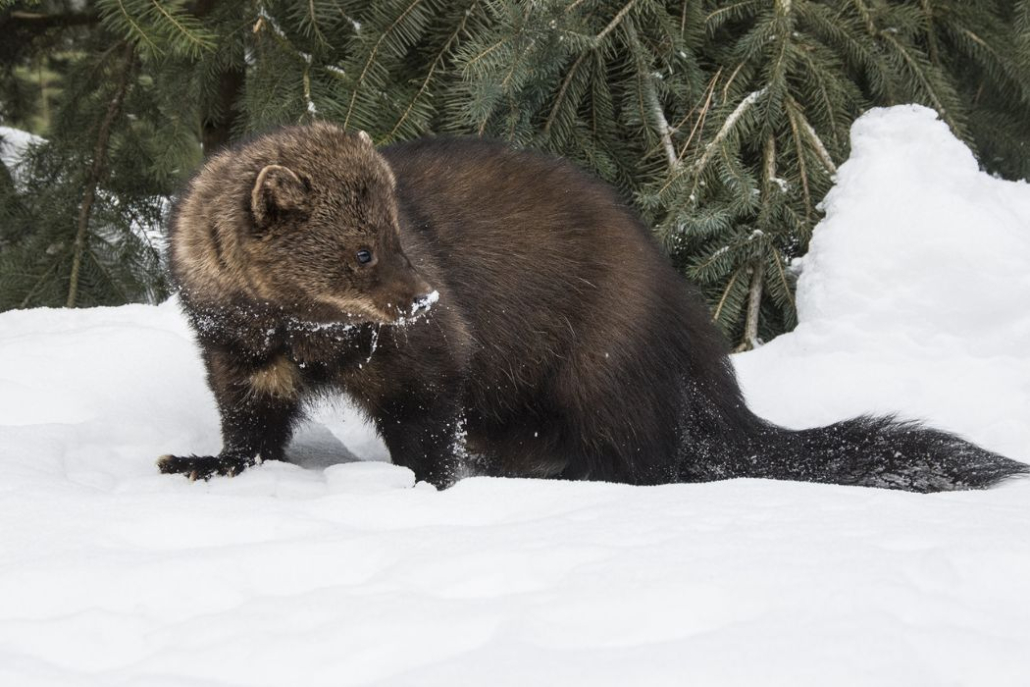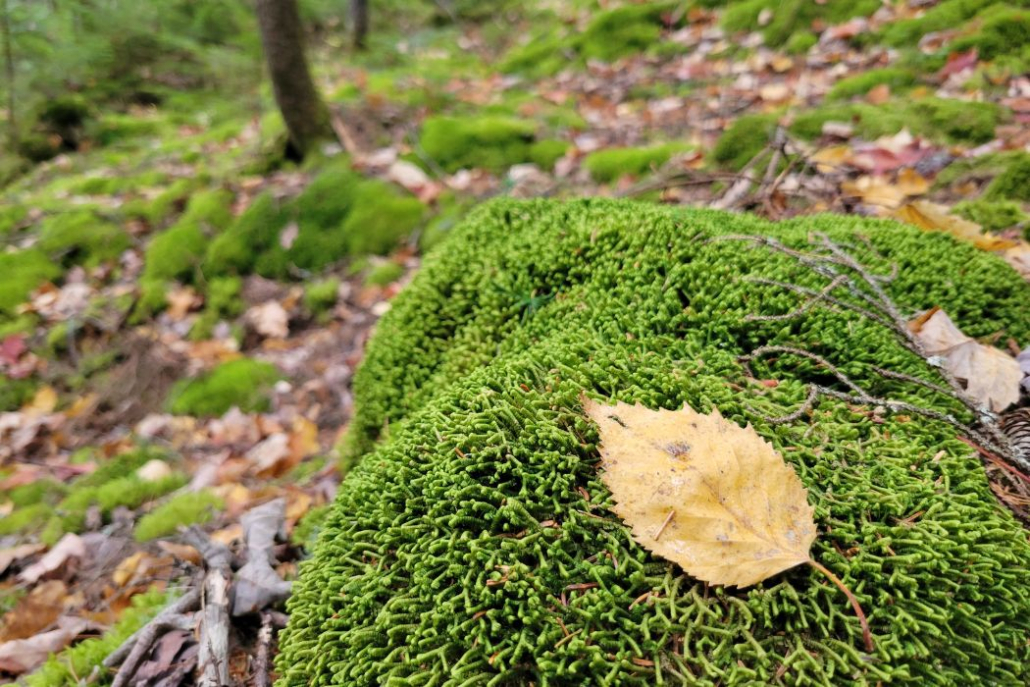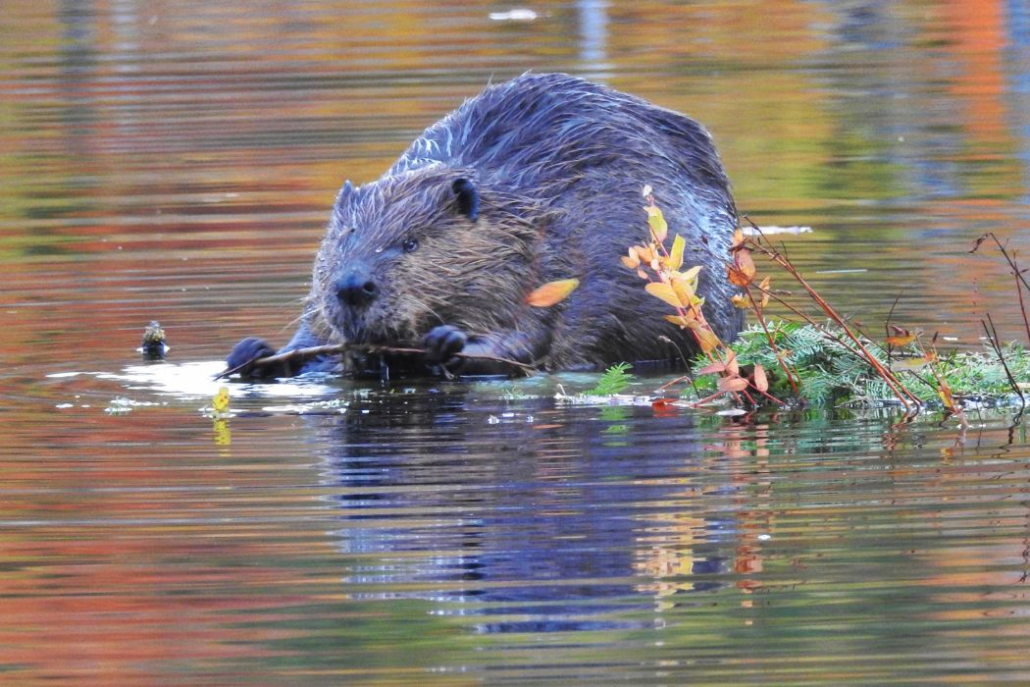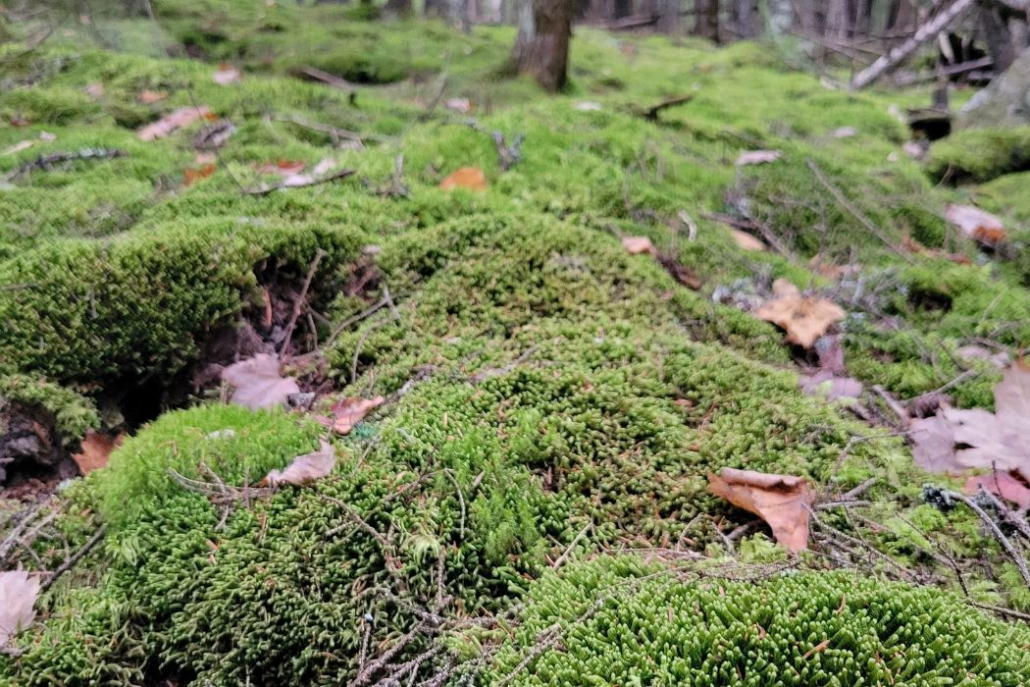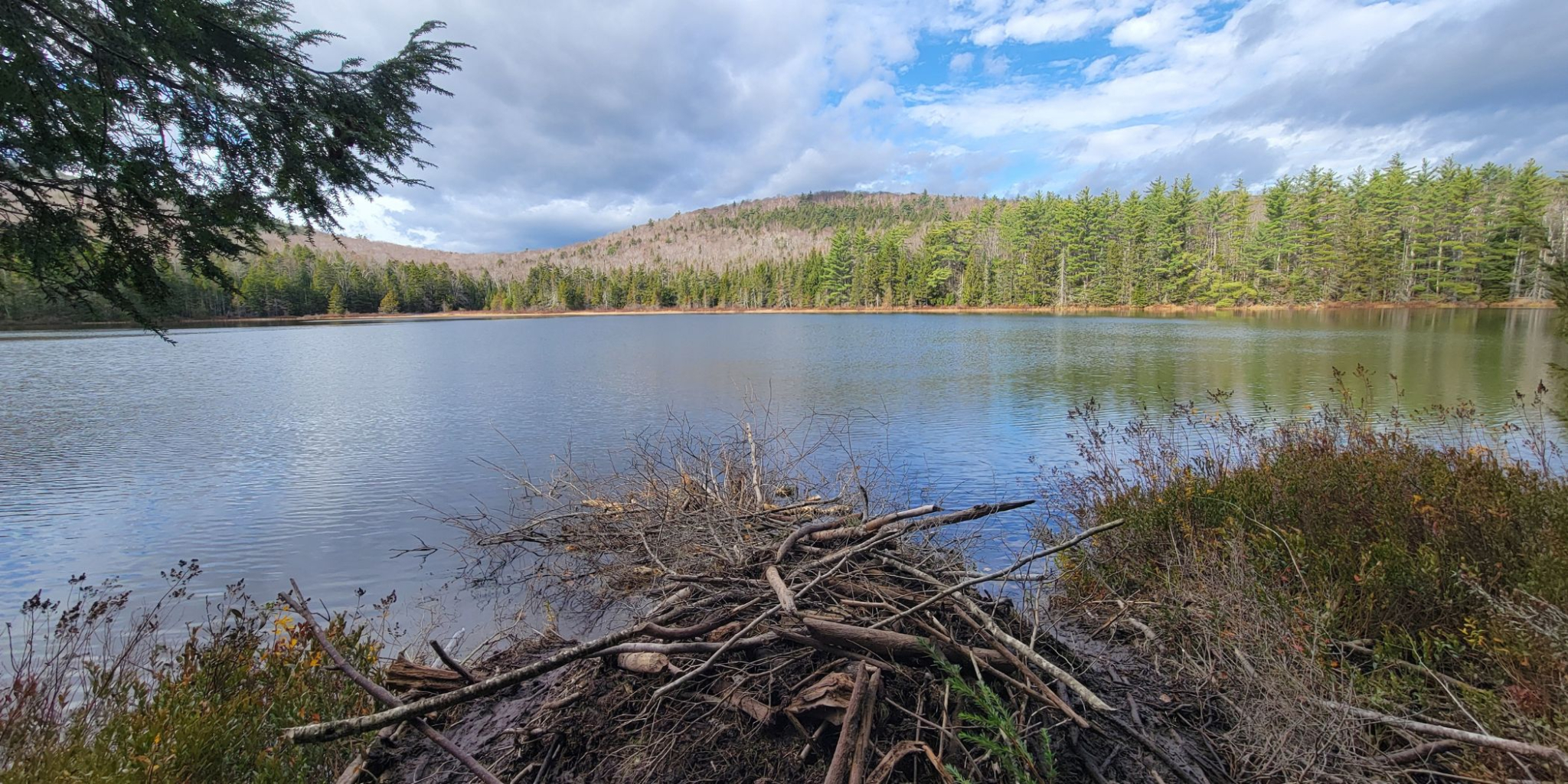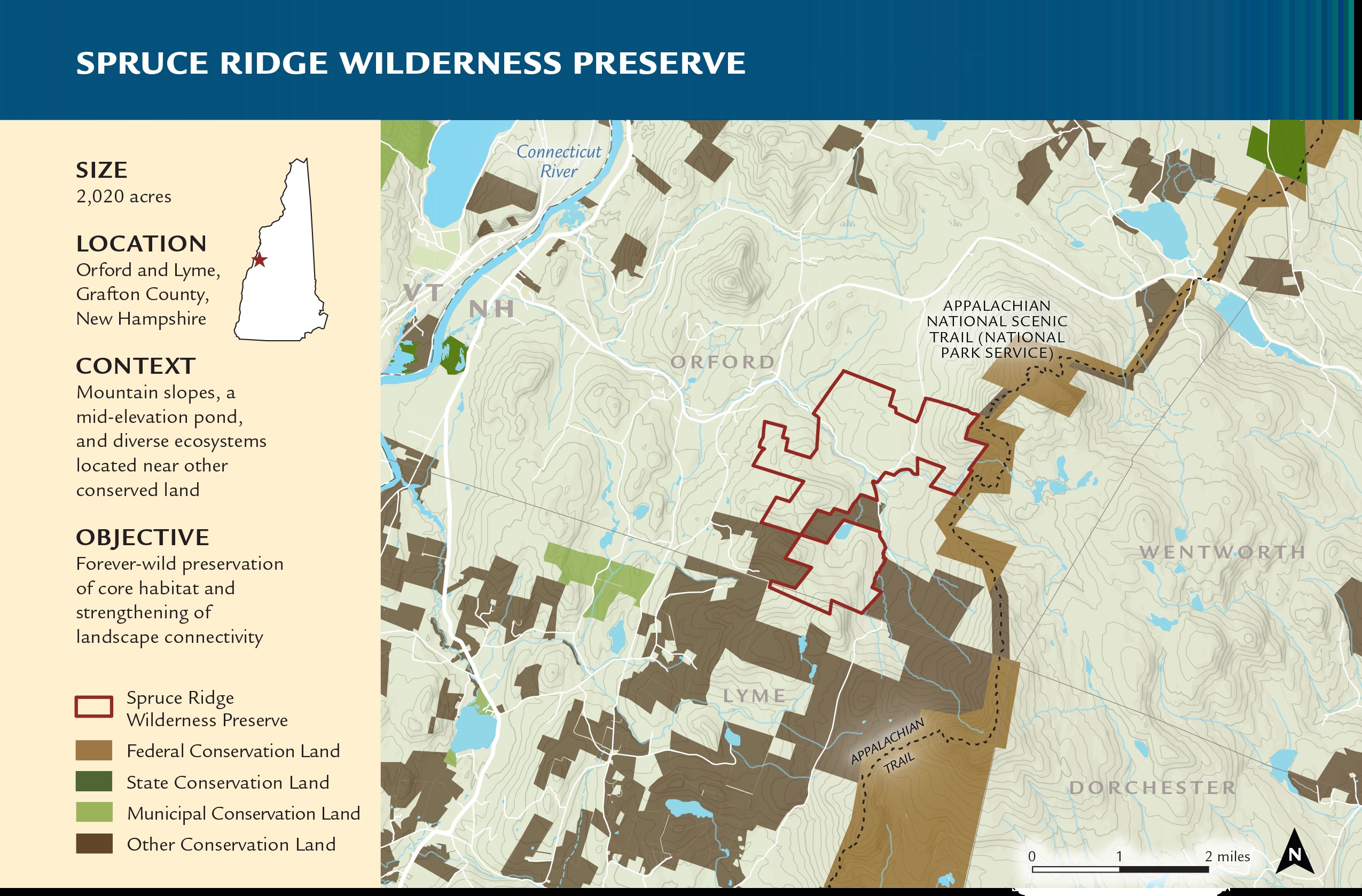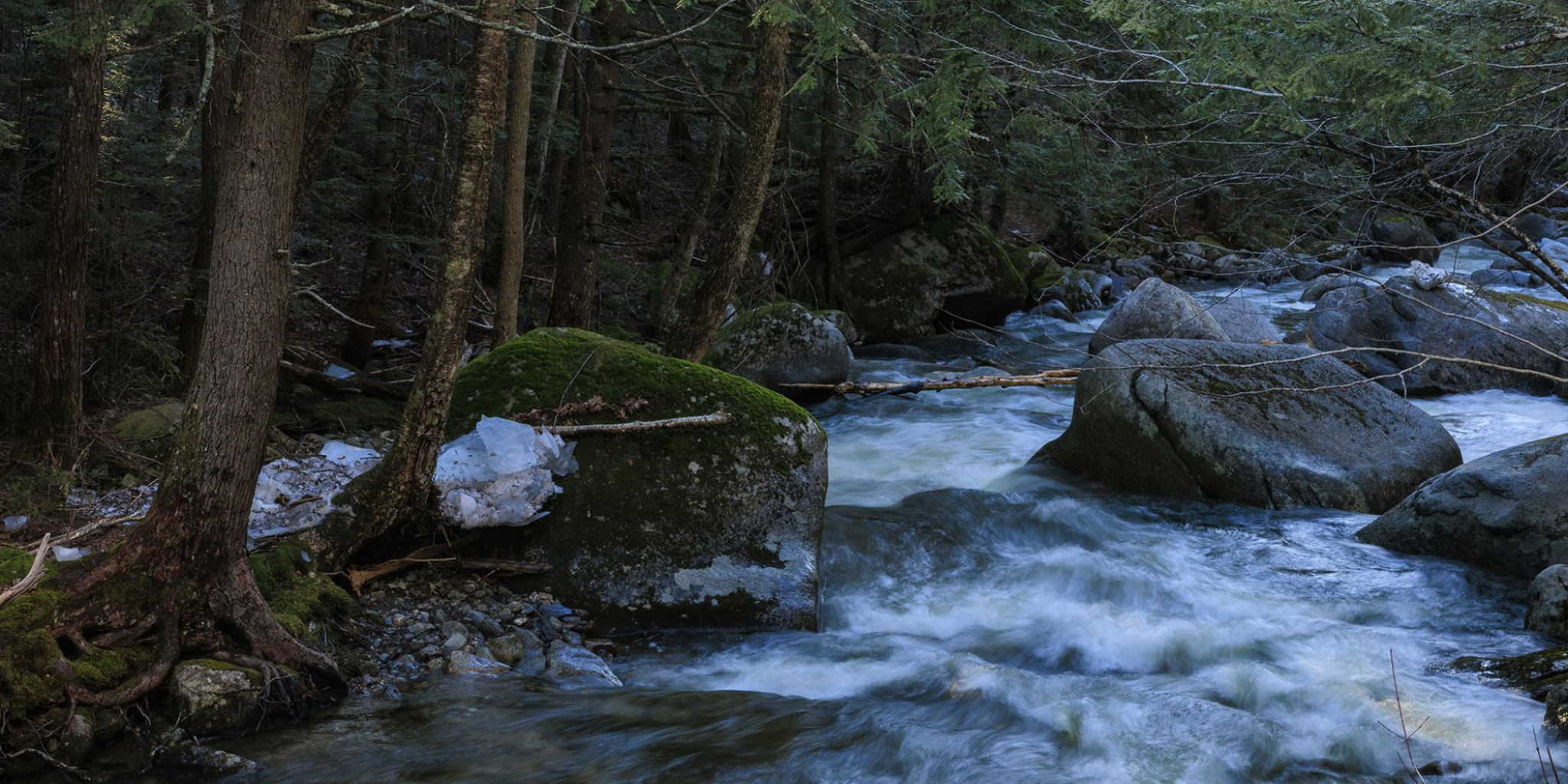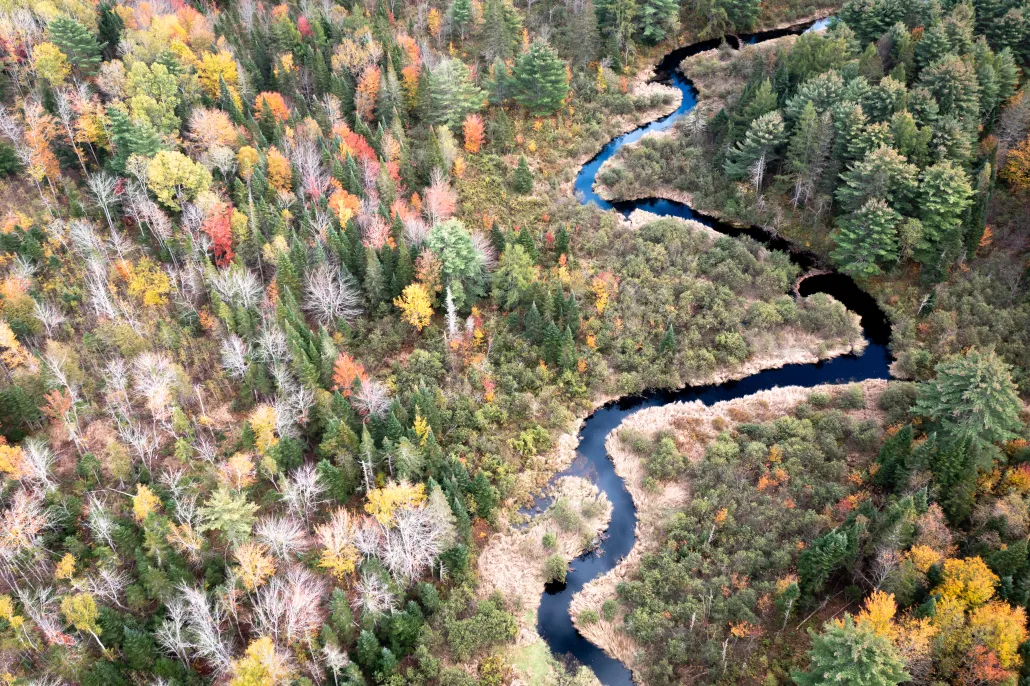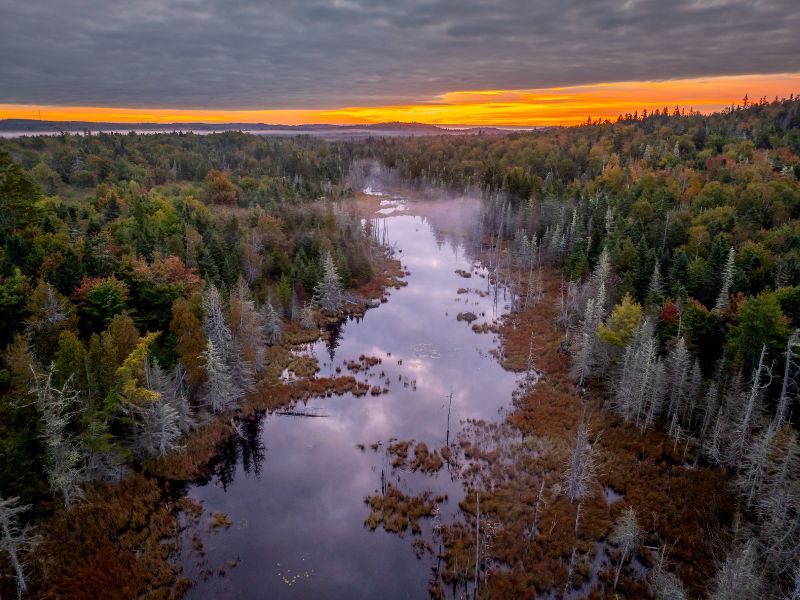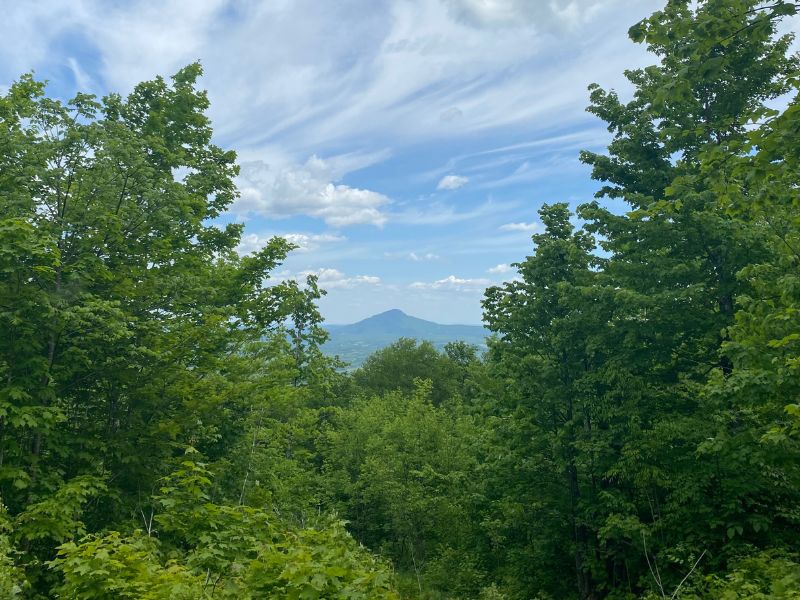A Forever-Wild Core in a Tapestry of Conserved Lands
The 2,020 acre Spruce Ridge Wilderness Preserve in Orford and Lyme, New Hampshire has many of the hallmarks of a majestic Northeastern landscape: towering mountains, diverse forests, and a mid-elevation pond fed by cold, clear streams. But this property’s conservation significance transcends its beauty. Critical wildlife and riparian corridors cross Spruce Ridge, which falls within a locus of federally and privately conserved lands and abuts the famed Appalachian Trail.
One look at the prospective Preserve map reveals the property’s strategic location. Neighboring Spruce Ridge is the Upper Valley Land Trust’s Mountain View Farm Conservation Area and other privately conserved land to the west, south, and north. Meanwhile, the Appalachian Trail runs through federally protected land on the property’s eastern flank, and further afield sprawls the 800,000-plus acres of the White Mountain National Forest. Spruce Ridge adds more than 2,000 acres of core wilderness to this rich conservation mosaic, advancing the Wilderness Trust’s vision of an ecologically vibrant, connected Northeast.
Protecting Prized Habitat for Wildlife
The Preserve’s peaks, forests, and streams provide a suite of core habitat for all manner of wildlife, complementing the surrounding managed landscape. As the property rewilds, numerous species will benefit from increasing structural complexity and a future free of logging.
Signs of wildlife already abound at Spruce Ridge. The chewed bases of trees in the forests surrounding the property’s aquatic focal point, Mason Pond, signal the presence of beaver. An active lodge along the pond’s shore forms the nexus of their activity. Given the property’s location, wide-ranging species like moose, bear, and fisher also likely find plentiful forage and shelter here as they transit the wider landscape.
The property’s high wildlife value has earned the recognition of the state. Much of Spruce Ridge sits within a Prioritized Habitat Block identified in New Hampshire’s Wildlife Action Plan and within an Important Forest Block identified by The Nature Conservancy.

